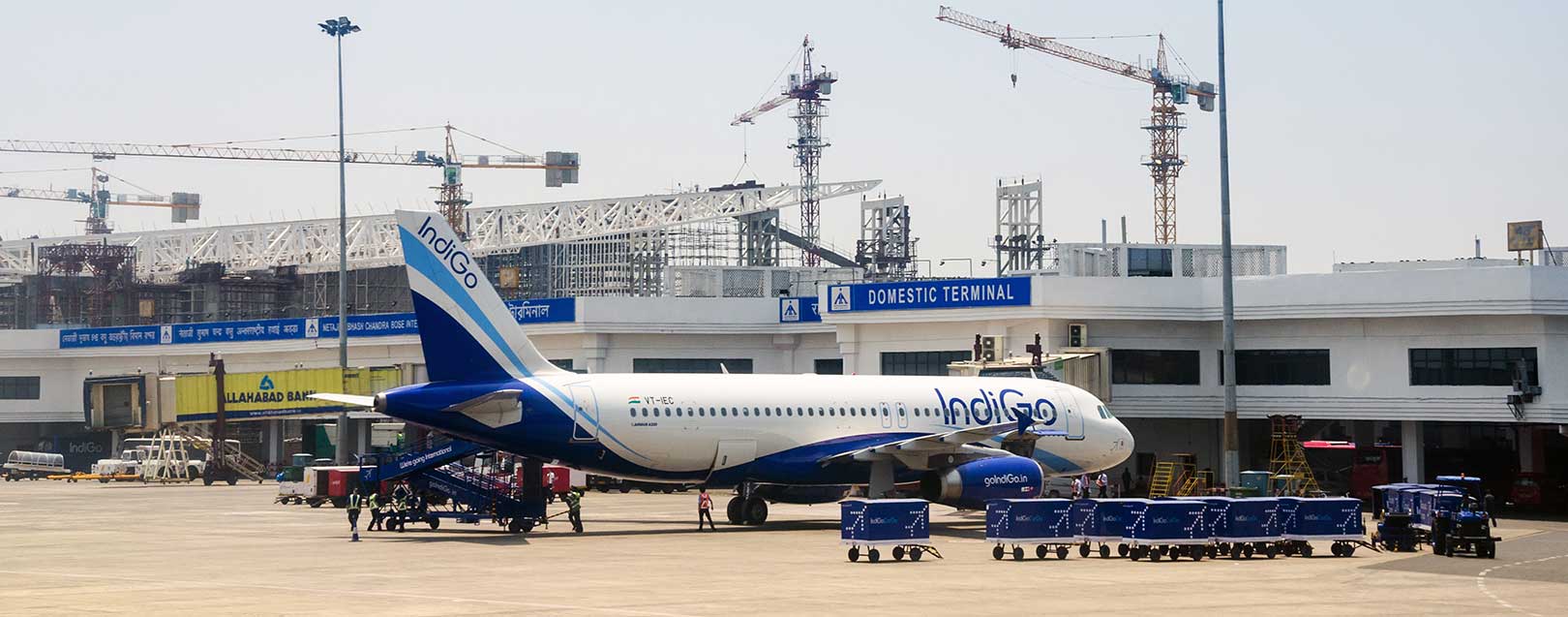
How the IndiGo IPO leads us to the question of ‘right’ foreign investments in the aviation industry
Steven Philip Warner | The Dollar Business
For those hopefully expecting an Indigo Airlines IPO in the last few days of this month, here’s an insider leak – the IPO won’t be out until late-July. Last fourteen days of July 2015 is when the window has been decided. The IndiGo management for now isn’t sure of the date either. Whatever the uncertainties over India’s largest carrier going public, one thing’s for sure – the market definitely expects IndiGo to get this one right too! We’re not just talking of the euphoria over a ‘healthy airline’ (much of an oxymoron these days in India) being listed. Speculations are rife about what IndiGo will do to get engaged with foreign investors – be it the pure chair-warming lot or even scheduled foreign carriers. There are suitors aplenty – some have gone vocal while some have remained tight-lipped. The tones of conversations about FIIs investing in IndiGo is different from those of the yesteryear, when the Indian partner was either a Kingfisher or an Air India. Far more positive is what it is today. [Given that Kingfisher mixed alcohol with flying, Air India drowned deeper each day with lack of professional management and constipated by survival kits funded by Indian taxpayers, and SpiceJet actually paid for just a mirage of greater market share, most wouldn’t have given a second thought to whether these three were even worth considering for a foreign carrier to invest in; forget investors looking for pure profit-making handshakes.] To give you an example, back in 2011, Gordon Bevan, Senior VP of UBM Aviation was of the opinion that whether or not the Indian government increased the FII/FDI limits in Indian airlines, the-then lot of carriers wouldn’t have found credible suitors. He was right. Kingfisher is in a coma and Air India only breathes because India is still an economy that is half clothed in the socialist fabric. But Bevan is upbeat today. He talks about IndiGo as being the start to a new chapter for Indian aviation when it comes to foreign investments (through the FDI-FII routes) in the business of scheduled airlines in the country. Some questions need to be asked here. Will investments by non-airline foreign investors help scheduled Indian airlines in the present day? Which is better – the non-airline group or carriers as buyers? And should FDI cap in scheduled Indian carriers be raised to 74%? To answer the first two questions first, we’d need to take a look at the Jet Airways-Ethiad Airways deal signed in 2013. Ethiad purchased a 24% minority stake in Jet for close to $400 million. That not only helped reduce Jet’s debt but also made operations slightly more cost-effective due to asset sharing and gave Jet indirect access to many of Ethiad’s overseas destinations. So going by this particular purchase by an airline entity, that investments by foreign carriers is a most positive development for Indian carriers is a given. Speaking about benefits to Jet from the Ethiad buy in it, to The Dollar Business, Binit Somaia, Regional Director – South Asia, Centre for Asia Pacific Aviation (CAPA), opines, “As a result of the investment by Etihad, Jet Airways has benefited from access to a powerful hub in Abu Dhabi and Etihad’s global network. In addition it has been able to refinance its debt through lower cost funding. It also benefits from scale economies in procurement right across the board.” Of course, for natural reasons, Indian carriers need to look to shake hands with foreign carriers class – even if that means overlooking non-carrier investors’ lucrative offers that may come on a premium of 10-20%. Adding detail to this argument in terms of choice of airline partners, John Siddharth, Defence & Aerospace Expert, Markets&Markets, tells The Dollar Business, “An Indian airline would consider selling stake to an airline from either South-East Asia or the Middle East depending on its future route planning. The advantage of stake sale to airline buyers is a common pool of resources and optimal asset utilization. From a passenger perspective it is all about connectivity and ease of travel.” But a choice of foreign buyer isn’t as simple as these few lines make it sound. One, buyers are hard to come when the sector-specific climate is as such as in India. Two, proper care has to be taken to ensure that neither is there a duplication of costs nor an overlapping of routes. (One reason why the merger between Air India and Indian Airlines (Feb 2011), and United and Continental Airlines (Oct 2010) got costly was because of the difference in fleet types that created duplicated maintenance costs and weighed heavy on operating margins of the merged entity!) Also it’s no big challenge for foreign carriers that have large exposure to the Indian market to bring traffic into the Indian sub-continent without local airline investment. (Look at FinnAir, Lufthansa and Emirates as examples.) Each foreign airline can talk though its own sweet deal with an Indian carrier (especially those in trouble and on the lookout for more business like SpiceJet) to secure connecting traffic in India. As far as duplication of routes is concerned, there will be little sense in say, a Lufthansa acquiring a minority stake in Jet. Why? What would Lufthansa do with Jet’s services to US? It will be difficult to allow the Indian carrier to route via Frankfurt or Munich because that would mean killing its own hub! So in this case, a stake purchase by Qantas in either Jet or Air India makes most sense because it would allow these brands to fly to Australia without actually flying their aircraft (which the two are reluctantly doing so at present). Talking about IndiGo in particular – if the airline is looking to welcome a foreign carrier aboard, it could divide the 49% FDI chunk into two exact pieces and give one to each carrier from US/Europe (like a Virgin, Lufthansa, British Airways, KLM, Air Canada, etc.) and either the Middle East or South Asia (Emirates, Singapore Airlines, Cathay Pacific, Emirates, Qatar, etc.). These will help fuel IndiGo’s expansion to foreign markets. [In fact for the past nine months, since FIPB approved a proposal from InterGlobe Aviation, to reclassify the 49% stake of promoter Rakesh Gangwal in IndiGo as NRI stake from FDI, Qatar Airways has been requesting IndiGo for permission to buy 49% in the airline, which IndiGo has been royally ignoring!] Here we come to the third big question. That of the Indian government’s Ministry of Civil Aviation (MoCA) allowing foreign investors to buy up to 74% stake in Indian carriers. About two years back, a logical request by the Department of Industrial Policy and Promotion (DIPP) to increase FDI cap in scheduled Indian airlines to 74% was brushed aside by the MoCA. Obviously the MoCA didn’t have to worry about FDI in Air India (the tax payers are always there, right?). Or they were perhaps too worried about the rule under international bilateral air services agreements that doesn’t allow airlines operating on foreign routes to have foreign majority stake ownership. [So if an Indian international carrier was 74% owned by an American airlines, it would no longer remain an Indian. Logical.] But how about airlines that were destined to remain within India by character and not out of will. Given a choice, Kingfisher Airlines’ CEO would have agreed to keep his carrier “only-national” for a 74% stake purchase by a foreign investor. Or a SpiceJet would have chosen to save some embarrassment by opting to stay limited to Indian boundaries. But because there was no facility for a majority stake in India’s domestic airlines, foreign buyers weren’t interested to rescue many ailing Indian carriers like Kingfisher Airlines and SpiceJet. The only thing real “foreign” about these many airlines remained their expat CEOs who knew little about the Indian daily flier! So there could be a reason for the MoCA to make a correction to its stance for logical reasons. Coming back to IndiGo’s IPO, it has “probably” been the only Indian airline to make profits every year for the past seven years. “Probably” because it may not be the only (Can you imagine Jet Airways making losses in the past eight years at a stretch to the tune of many thousands of crores and still continuing without working capital woes?), and because it may not be making profits in the first place (because it’s still not listed for reasons best known to its promoters and management). [We’ll keep speculation about how UK-based and Jet Airways’ promoter-owned Tail Winds Ltd. supplies aircraft to Jet Airways and how the airline makes losses due to the heavy outflow that happens as lease payments, for another day.] But all said and done, that IndiGo is up for hitting the primary market soon is fantastic news for the airlines and the Indian aviation sector alike. It has to be careful about its choice of foreign partner though. Come July and we will hear the opening bell for IndiGo.
 Binit Somaia, Regional Director – South Asia, Centre for Asia Pacific Aviation (CAPA)
Binit Somaia, Regional Director – South Asia, Centre for Asia Pacific Aviation (CAPA) John Siddharth, Defence & Aerospace Expert, Markets & Markets
John Siddharth, Defence & Aerospace Expert, Markets & Markets
May 29, 2015 | 3:53 pm IST.






 to success.
to success.